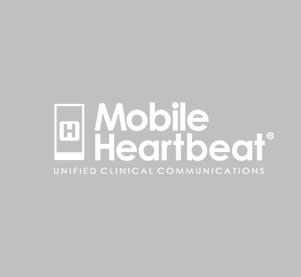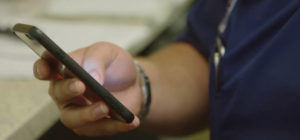When you’re selecting a new technology to implement across your hospital, it’s a given that you should be able to speak to its value. Doing that with a communication and collaboration solution can, at first, seem daunting. How can you accurately measure the value of a tool that optimizes workflows?
Fortunately, experience and research have indicated some best practices for documenting these kinds of initiatives in a way that you can prove ROI according to specific goals your hospital may have. Many of our customers have established best practices for measuring their initiatives in order to determine what’s working for them and what can be improved upon.
Indeed, it’s in your hospital’s best interest to measure the impact of your mobility investments and showcase the meaningful value they bring to both patient outcomes and the bottom line, so long as you prepare in advance. A big part of that preparation hinges on your approach to measurement, which should start well before you deploy updates in the first place.
After all, it’s difficult to prove the return for something if you don’t have a sensible baseline from the get-go. How will you know how much time your CC&C solution saves from clinical workflows if you don’t know how much time those workflows required pre-deployment?
To get started, plot out a sustainable measurement strategy that includes clinical and operational metrics. With those “before” metrics assessed, you’ll be better prepared to compare them to the “after” metrics to evaluate the impact of your new systems.
What exactly makes a good mobility measurement strategy? Often, it depends on the health system—and which individual performance indicators are most important to your facility. In general, however, many hospitals will want to consider the following measurements in their plan:
1. Time
Because the ability to save precious moments is one of the biggest transformational changes that a well-deployed CC&C mobility solution yields, it’s critical to understand how much time tasks take before deployment so that you know how well your investments pay off in the long run.
Consider the impact of time on clinicians’ workflows both as a whole and by individual tasks. For example, how long does it take for a nurse to track down the attending physician? What’s the turnaround time for ordering and receiving imaging reports? How do communication bottlenecks slow down the speed of care delivery from intake to discharge?
All of these things are issues a proper CC&C tool addresses—so it’s important to get a pulse on potential problems before you can understand how well the solutions work.
2. Ambient Noise
Measuring ambient noise can be tricky but important—as the cacophony of alerts and overhead alarms tend to subside when they’re efficiently funneled into a single mobility solution like MH-CURE®.
To track ambient noise, look to HCAHPS reports for patient perceptions on the quietness of the hospital—and compare metrics before the launch with those perceptions after the go-live date. How did the technology help address sound levels in the facility? Was there a marked difference in patient perceptions of noise after the mobility updates?
You likely will find that there is. For example, Mobile Heartbeat helped one health system reduce ambient noise by over 9db (nearly 50 percent) in patient areas after deploying the MH-CURE Platform:
3. Patient Outcomes
Patient outcomes and satisfaction are paramount considerations in any technology or workflow change a hospital makes. At the end of the day, a solution that can speed up door-to-bed or nurse call response times will positively contribute to the hospital workflow, so it’s important to measure these things carefully in the weeks before implementation, then iteratively in the months following.
In addition to patient outcomes, taking a concerted look at how length of stay and HCAHPS scores evolve overall in the wake of your CC&C roll-out can also help demonstrate the value of new solutions. Because patients are asked about their perceptions of clinician-to-clinician communication, it’s a perfect insight to gauge how mobility improvements can optimize workflows and streamline collaboration across-the-board.
One Mobile Heartbeat customer saw length of stay drop by 2.2 days after six months of rolling out MH-CURE. Discover more when you download our case study.
4. Staff Satisfaction
How exactly can mobility solutions impact staff satisfaction? As one example, an optimized CC&C tool can help clinicians more easily connect with each other without the wild goose chase, which puts providers back at the bedside and helping patients.
But also, staff satisfaction gets a boost by way of reducing clinician burnout and alarm fatigue inherent in noisy overhead alarm systems—as well as the benefit of not having to wear a “utility belt” of pagers, phones and tablets. For a before/after satisfaction comparison, benchmark surveys can help shed light on staff morale, as well as reveal potential areas for improvement going forward.
5. Medical Errors
According to the Johns Hopkins University School of Medicine, medical errors are the third-leading cause of death, with daily communication breakdowns a major contributor to error risk.
Mistakes take place in a variety of scenarios, from pre- and post-operative communications to patient transfers. In many of those situations, hospitals may find that CC&C tools can help them prevent against the risk of error—but you’ll only know that if you have an adequate baseline from which to compare. To do that, include in your measurement plan the prevalence of medical errors broken down by category, and review those metrics at the three, six and 12-month marks post-launch to measure potential effects on error reduction.
Making Measurement Work for You
Indeed, proving ROI for a technology solution may require effort at the onset in terms of establishing and implementing your measurement strategy, but it will pay out dividends once you’re able to confidently assess the clinical and operational value those new tools can bring.
Ensuring that you engage the right stakeholders as possible in the metric-gathering process can make measurement less daunting, and more feasible, too. Plus, because mobility solutions benefit everyone—including patients, providers and non-clinical support staff—developing assessments that are grounded in concrete insights, rather than gut perceptions, can make all the difference once budget review rolls around.






